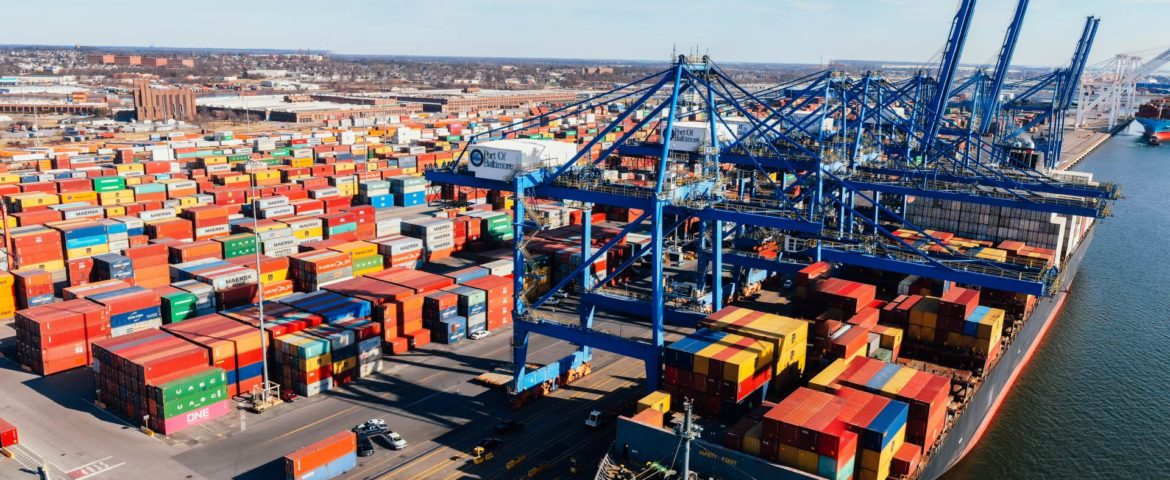Intermodal shipping is the use of 2 or more modes of transportation to move cargo from its origin to its destination. The reason for using two or more modes is either due to the necessity of moving freight across both land and sea, or due to certain cost/energy efficiencies of utilizing two modes.
Intermodal is nearly always associated with container shipping, which means that typically once freight is secured inside a container, it does not have to be repacked or handled until it reaches its end destination. This is not only cheaper as less labor is involved, but also more time-efficient and promotes safer transit of the goods.
Moving goods internationally always involves some sort of intermodal transportation, even if not in a “normal” sense, as even with air freight, the freight will move via truck to the airport, then be on a flight, then back to a truck for delivery. While this isn’t the standard intermodal definition we typically think of, it is still a form of intermodal.
Intermodal freight uses a variety of container sizes depending on if the containers are moving internationally or domestically with containers ranging from 20ft, 40ft, and 53 ft.
Today intermodal provides a strategic source of transportation allowing supply chains to cost-effectively ship raw materials and finished goods alike across the globe, fostering increasingly globalized supply chains relying on suppliers and international assembly points. Today, intermodal is the fastest-growing segment of North American railway revenue.
Transloading Freight Before Containers
Supply chains and shipping, in general, were extremely labor-intensive prior to the widespread adoption of containerization. Freight had to be manually packed into a truck, then loaded into a bulk style freighter and secured in the cargo holds. Once the ship reached its port of call, the cargo again had to be manually moved and raised from the cargo hold via different types of cranes. Once on land, the cargo could be manually repacked into a railway boxcar or into a truck. If being loaded into a boxcar, the freight them moved via rail to an inland location, and potentially handled again back into a truck for final delivery. Of course, many more businesses during the 1940s/50s had rail service directly to their facilities vs today.
Early Containerization
In the early 1950s containerization started to appear and by the 1960s, the trend was well cemented to become the standard form of general merchandise shipping. In the mid 1980s double stacking became common, which is a method in which North American railways can load two intermodal containers on top of one another on a single railway, thus allowing a 100 car train to haul 200 containers vs 100. This made a massive difference in the efficiency and profitability of moving domestic and international containers cross country via railway service.
Due to the height requirements for intermodal double stacking, it is primarily a North American phenomenon with some limited adoption in Europe and other parts of the world.
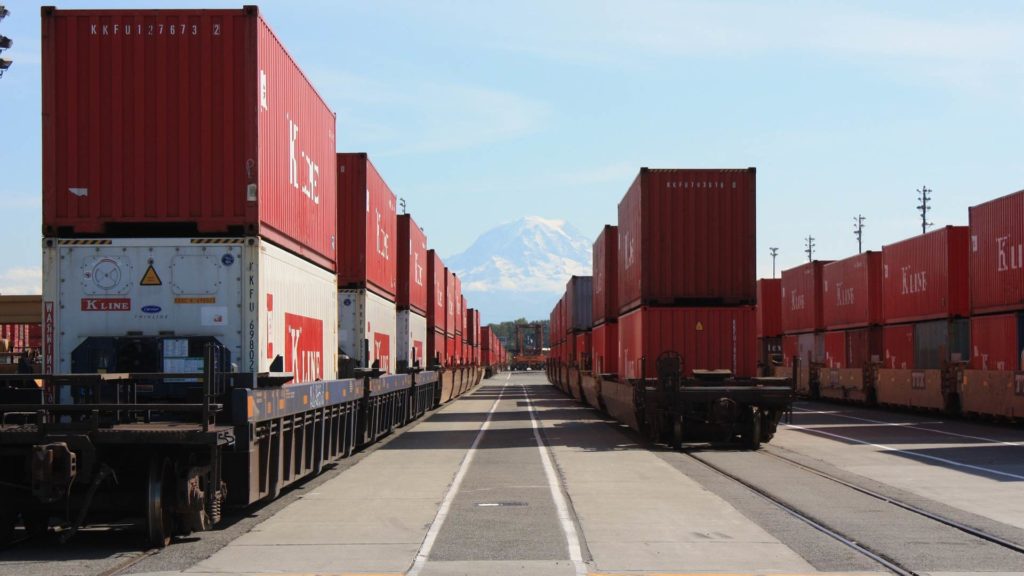
Domestic Intermodal Shipping Today
Today hundreds of thousands of intermodal shipments move domestically in the United States alone, with domestic intermodal service via 53 ft containers acting as an alternative to long haul over the road trucking. There are several advantages of intermodal vs OTR trucking, most intrinsically is that intermodal is typically 10-25% less costly on long haul routes depending on freight market conditions. At times, whether during cyclical market conditions or peak season, over the road trucking can be hard to secure, and intermodal provides an added source of transportation capacity to keep freight moving within a supply chain. This has become a major contributor to intermodal’s success during the covid-19 pandemic, as there has been a trucking shortage in many geographic areas.
While intermodal does take an extra day or two to reach its destination beyond that of over the road cross country shipping, the tradeoff of available capacity and cost is typically worth the extra transit time.
International Intermodal Shipping
Intermodal provides the most efficient overland transport for international imports and exports to reach their final destination by leveraging railway routes just like the above domestic intermodal.
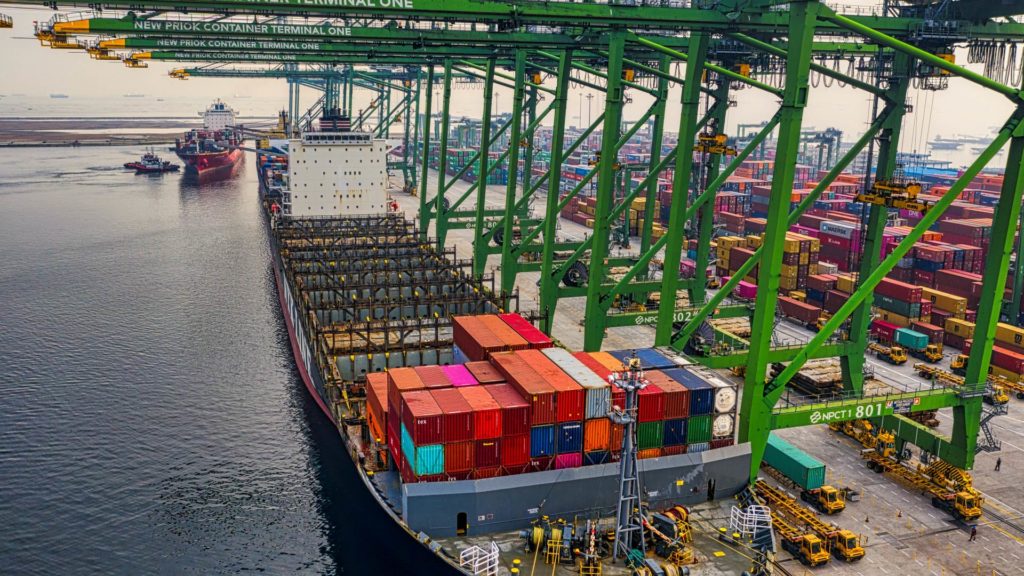
With international intermodal shipping, containers are unloaded from a ship then loaded onto specialized rail cars to move to an inland point where the containers will then be transloaded onto trucks for the final mile portion of the trip to the destination. This means that the inherent efficiencies of railway transportation are used for the long haul portion of the inland journey, keeping roads less congested, using less fuel, reducing costs and cutting greenhouse gas emissions.
Other countries are also dramatically investing in intermodal capacity to foster exports and imports with further rail and port infrastructure being prime candidates for this type of investment. European countries have upgraded some corridors with double stacking clearance, advanced cranes, and in gate systems.
Intermodal Adoption for a Green Supply Chain
Railway freight movements are dramatically more efficient than over the road trucking, with a train being able to move 1 ton of freight approximately 500 miles with only one gallon of diesel fuel. This is roughly a 60-75% decrease in emissions vs semi-trucks.
As more and more global supply chains are working hard to reduce their environmental impact, intermodal is a low-hanging fruit that will quickly foster a more green supply chain with few downsides. It’s likely that at some point a carbon tax will be implemented, which would put a much more acute pressure on supply chains to reduce carbon emissions, likely further increasing intermodal demand for both international and domestic container shipping.
Drayage
Drayage is the short haul trucking used to move containers on the first and last mile of their trip. This type of trucking is used on both international and domestic intermodal, being a critical piece of the overall intermodal transportation strategy. Drayage is also used at inland rail terminals and inland ports to move containers from the terminal to the final destination. Often drayage hauls are less than 150 miles. For drivers, working in the drayage industry can be preferable to over the road long haul trucking as drayage drivers are typically not on the road overnight.
Different types of drayage chassis are used depending on what type of container is being hauled.
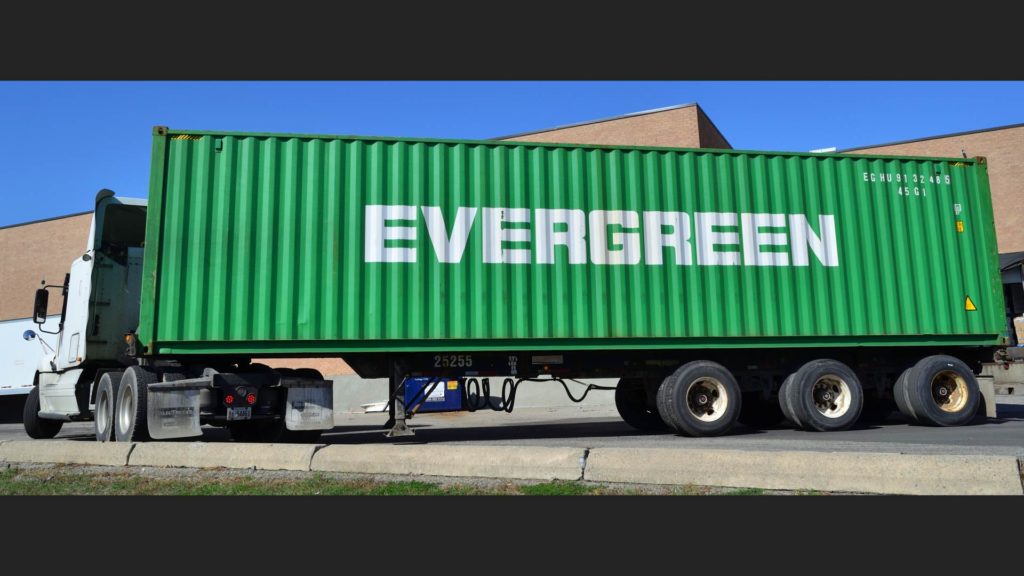
Incorporating Intermodal Into Your Supply Chain
For supply chains looking to add intermodal as a mode diversification, cost savings, or carbon footprint reducing strategy, the first step is defining international vs domestic. This is of course very obvious depending on the type of freight you ship, but the method by which freight bookings will be secured and planned will vary with this distinction. Often but not always, international import intermodal services are planned and purchased through the steamship line your freight is moving on. Each steamship line will have specific deals with certain railways and partnerships to reach inland locations from different ports.
If you are interested in adopting domestic intermodal into your supply chain, contact us. We provide lane analysis and can provide guidance on which of your current shipping lanes would present the largest benefit from introducing intermodal. Our dashboard allows easy planning, booking, tracking and document management.
Refrigerated intermodal transportation is also available depending on needed route.
Intermodal Going Forward
Intermodal’s share of overall domestic freight will likely continue to grow, it’s safe to assume fuel costs will gradually rise, and over time even more, emphasis will be placed on green supply chain practices and mode diversification.
Both port authorities and railways will continue to invest the capital needed to grow and improve intermodal infrastructure for increased volume and more efficient freight transportation. The addition of numerous inland ports has provided a landing pad of sorts for international container shipments that are moving substantially inland for final delivery. Additional investment in inland port facilities will continue to increase the number of inland destinations that containers can reasonably reach via inland ports access. For inland ports that are seeing increases in volume and shipment demand, investments will likely focus on capacity improvements such as additional cranes, more tracks, more room for container storage, and advanced gate technology making it easier and quicker for drivers to access the facilities.
The addition of technologies such as electric trucks, driverless trucks, hydrogen and battery powered locomotives, and potentially self-driving railway locomotives will all improve the efficiency of intermodal transportation. While driverless trucks and trains and battery powered locomotives are further away than perhaps some people realize, the application of electric semi trucks on short haul container trucking lanes is happening now as manufacturers test their new vehicles. Drayage is often relatively short haul compared with traditional over the road trucking which provides an excellent test bed for current generation electric trucks, that as of yet, lack the range necessary for long haul freight runs.
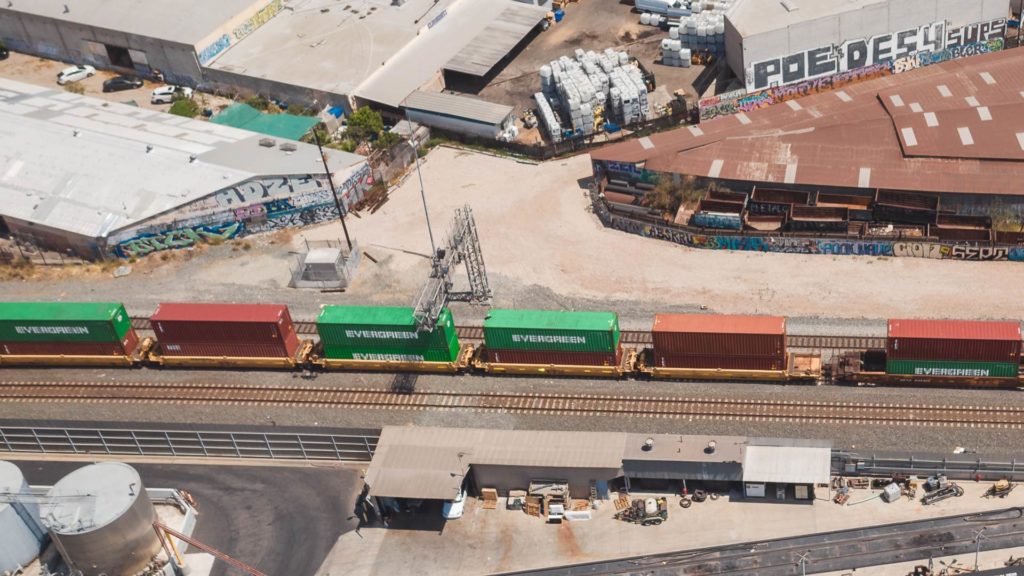
The covid-19 pandemic exposed vulnerabilities within supply chains that many didn’t realize were such a major issue. Going forward increased emphasis will be placed on supply chain resilience through disruptions. This type of risk management will come in multiple ways, but one key component will the diversification of supply chains. Supply chain diversification can be diversifying the supplier base used, the types of transportation and number of logistics partners relied upon.
The other significant supply chain transformation that could see intermodal adoption increase would be the use of nearshoring. Several major manufacturing and consumer products firms have expressed interest in relocating some or all of their production facilities to Mexico, out of Asia. While moves like this will take years to happen, it still signals a change in supply chain philosophy.
Near shoring to a country like Mexico means that imports will not necessarily need ocean transport, but intermodal rail containers and over the road trucking can be used to move the imports into the US. This reduces lead time, reduces freight transportation spend and reduces supply chain risk.
Zmodal is a top intermodal shipping company, providing door-to-door intermodal, and full truckload services nationwide through our digital supply chain dashboard which provides easy route searching, booking, document management, and analytics. CONTACT US if you want to lower your supply chain costs or want access to North American intermodal capacity.
